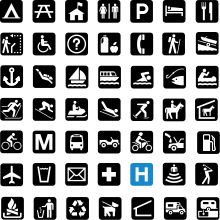Email marketing is the act of sending a commercial message, typically to a group of people, using email. In its broadest sense, every email sent to a potential or current customer could be considered email marketing. It involves using email to send advertisements, request business, or solicit sales or donations. Email marketing strategies commonly seek to achieve one or more of three primary objectives, to building loyalty, trust, or brand awareness. The term usually refers to sending email messages with the purpose of enhancing a merchant's relationship with current or previous customers, encouraging customer loyalty and repeat business, acquiring new customers or convincing current customers to purchase something immediately, and sharing third-party ads.
History
Email marketing has evolved rapidly alongside the technological growth of the 21st century. Before this growth, when emails were novelties to most customers, email marketing was not as effective. In 1978, Gary Thuerk of Digital Equipment Corporation (DEC) sent out the first mass email[1] to approximately 400 potential clients via the Advanced Research Projects Agency Network (ARPANET). He claimed that this resulted in $13 million worth of sales of DEC products,[2] and highlighted the potential of marketing through mass emails.
However, as email marketing developed as an effective means of direct communication, in the 1990s, users increasingly began referring to it as "spam" and began blocking out content from emails with filters and blocking programs. To effectively communicate a message through email, marketers had to develop a way of pushing content through to the end user without being cut out by automatic filters and spam removing software.
Historically, it has not been easy to measure the effectiveness of marketing campaigns because target markets cannot be adequately defined. Email marketing carries the benefit of allowing marketers to identify returns on investment and measure and improve efficiency.[citation needed] Email marketing allows marketers to see users' feedback in real-time and monitor how effective their campaign is in achieving market penetration, revealing a communication channel's scope. At the same time, however, it also means that the more personal nature of specific advertising methods, such as television advertisements, cannot be captured.
Types
Email marketing can be carried out through different types of emails:
Transactional emails
Transactional emails are usually triggered based on a customer's action with a company. To be qualified as transactional or relationship messages, these communications' primary purpose must be "to facilitate, complete or confirm a commercial transaction that the recipient has previously agreed to enter into with the sender" along with a few other narrow definitions of transactional messaging.[3] Triggered transactional messages include dropped basket messages, password reset emails, purchase or order confirmation emails, order status emails, reorder emails, and email receipts.
The primary purpose of a transactional email is to convey information regarding the action that triggered it. But, due to their high open rates (51.3% compared to 36.6% for email newsletters), transactional emails are an opportunity to introduce or extend the email relationship with customers or subscribers; to anticipate and answer questions; or to cross-sell or up-sell products or services.[4]
Many email newsletter software vendors offer transactional email support, which gives companies the ability to include promotional messages within the body of transactional emails. There are also software vendors that offer specialized transactional email marketing services, which include providing targeted and personalized transactional email messages and running specific marketing campaigns (such as customer referral programs).[citation needed]
Direct emails
Direct email involves sending an email solely to communicate a promotional message (for example, a special offer or a product catalog). Companies usually collect a list of customer or prospect email addresses to send direct promotional messages to, or they rent a list of email addresses from service companies.[citation needed]
Comparison to traditional mail
There are both advantages and disadvantages to using email marketing in comparison to traditional advertising mail.
Advantages
Email marketing is popular with companies for several reasons:
- Email marketing is significantly cheaper and faster than traditional mail, mainly because with email, most of the cost falls on the recipient.[5]
- Email marketing platforms provide detailed analytics, allowing businesses to track open rates, click-through rates, and other important metrics to evaluate campaign performance.[citation needed]
- Automation tools make it easier to schedule and send emails at specific times or based on user actions, saving time and effort.[6]
- Businesses and organizations who send a high volume of emails can use an ESP (email service provider) to gather information about the behavior of the recipients. The insights provided by consumer response to email marketing help businesses and organizations understand and make use of consumer behavior.[7]
- Almost half of American Internet users check or send email on a typical day,[8] with emails delivered between 1 am and 5 am local time outperforming those sent at other times in open and click rates.[9][10]
Disadvantages
- As of mid-2016 email deliverability is still an issue for legitimate marketers. According to the report, legitimate email servers averaged a delivery rate of 73% in the U.S.; six percent were filtered as spam, and 22% were missing. This lags behind other countries: Australia delivers at 90%, Canada at 89%, Britain at 88%, France at 84%, Germany at 80% and Brazil at 79%.[11]
- Companies considering the use of an email marketing program must make sure that their program does not violate spam laws such as the United States' Controlling the Assault of Non-Solicited Pornography and Marketing Act (CAN-SPAM),[12] the European Privacy and Electronic Communications Regulations 2003, or their Internet service provider's acceptable use policy.
- An overwhelming amount of commercial email or untargeted emails can be irritating to consumers. This irritation can lead to consumers unsubscribing from all messages or building a negative brand association. Untargeted emails lead to low click through rate, hindering marketing campaign performance. [13]
You received this message because you are subscribed to the Google Groups "1top-oldtattoo-1" group.
To unsubscribe from this group and stop receiving emails from it, send an email to 1top-oldtattoo-1+unsubscribe@googlegroups.com.
To view this discussion on the web visit https://groups.google.com/d/msgid/1top-oldtattoo-1/CAGNPKmnrMn%3DpCgduCfmKh-BPf--O%2Bj61yXFJgToDcsAODm%3DC5w%40mail.gmail.com.











